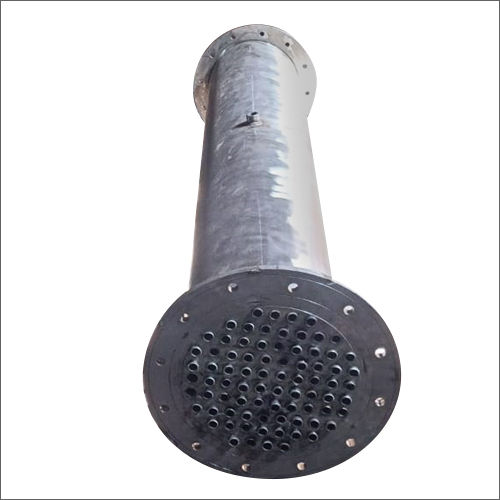
Steel Heat Exchanger
Product Details:
- Usage Industrial
- Size Different Sizes Available
- Temperature High-temperature
- Condition New
- Click to View more
Steel Heat Exchanger Price And Quantity
- 11500 INR/Unit
- 10 Unit
Steel Heat Exchanger Product Specifications
- Different Sizes Available
- Industrial
- High-temperature
- New
Steel Heat Exchanger Trade Information
- Cash Advance (CA)
- 5000 Unit Per Month
- 10 Days
- All India
Product Description
A form of heat exchanger used in many industries to effectively transfer heat between two fluid streams is a steel heat exchanger. Applications include HVAC systems, power plants, chemical processing, oil refineries, and food processing frequently use heat exchangers.
Due to its good thermal conductivity, high strength, long lifespan, and resistance to corrosion, steel is a favoured material for heat exchangers. Alloy steel, stainless steel, and carbon steel are frequently used in heat exchangers. The application, operating circumstances, and suitability for the relevant fluids will all influence the type of steel that is used.
A steel heat exchanger's basic construction comprises of two key elements:
These are the passageways through which the fluid flows, often known as tubes or channels. In a heat exchanger with tubes and a shell, one fluid circulates inside the tubes while another surrounds the tubes. The fluids in plate heat exchangers move between parallel plates. The selection of a configuration is influenced by things like needed heat transfer, pressure drop considerations, and accessibility for maintenance.
The shell or casing, which provides structural support and encloses the tubes or channels. Additionally, it makes it easier for the second fluid to move about the tubes and conduct heat.
In a steel heat exchanger, the process of heat transfer normally entails the conduction of heat from one fluid to another fluid. The colder fluid absorbs heat from the heated fluid, changing the temperature as required.
Fins or turbulators on the surface of the tubes to increase heat transfer area or encourage fluid mixing are examples of extra features that steel heat exchangers can include to improve performance. Additionally, baffles can be employed inside the shell to improve heat transfer and guide fluid flow.
To ensure optimum performance and avoid fouling or corrosion, routine maintenance and cleaning are crucial. When deposits build up on the heat transfer surfaces, fouling happens and efficiency is reduced. The corrosiveness of the fluids or the surroundings can both cause corrosion. To reduce these problems, protective coatings, suitable fluid handling, and planned maintenance are used.
Due to its dependability, efficiency, and adaptability for a wide range of applications, steel heat exchangers are generally utilised extensively. The particular needs of the application and the kind of fluids used will determine the design, size, and specifications of a steel heat exchanger.
Product details
| Flow Area | 0.5 Sq. Mtr. |
| Type | Shell And Tube |
| Medium Used | Water |
| Application | Pharmaceutical industry |
| Voltage | 380 V |
| Brand | anika |
| Color | White |
| Material of Construction | ms copper |
Other Products in 'Heat Exchanger' category
 |
ANIKA PLANTS AND EQUIPMENTS INDUSTRIES
All Rights Reserved.(Terms of Use) Developed and Managed by Infocom Network Private Limited. |
